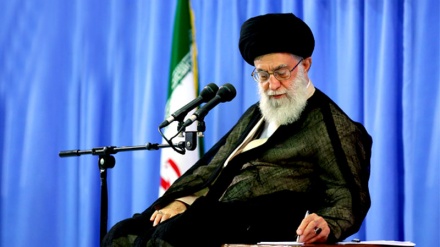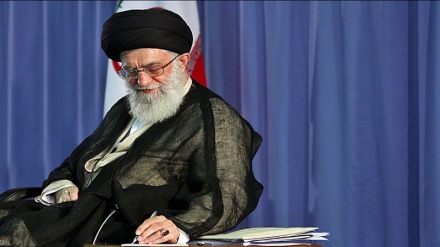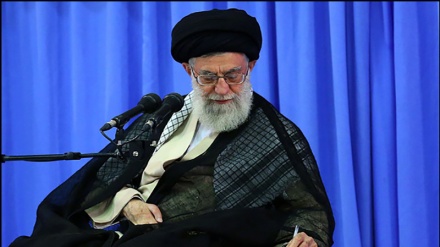To all youths in the West (5)
This time we are going to review other parts of Ayatollah Khamenei’s second missive to the youths in the West, especially North America and Europe.
Ayatollah Khamenei’s first missive, which was released on January 22, 2015, focused on inviting the Western youths to get familiar with Islam through genuine and first-hand sources of this religion. He wrote, “I address you the youths, not because of ignoring your parents but rather for the fact that I see the future of your nation and country in your hands and find the sense of truth-seeking more alive and vigilant in your hearts. Furthermore, I don’t address your politicians and statesmen for I think that they have consciously separated the path of politics from honesty and truthfulness.”
Ayatollah Khamenei’s second missive had also addressed the youths in the West. He wrote, “I genuinely believe that it is only you youth who by learning the lessons of today’s hardship, have the power to discover new means for building the future and who can be barriers in the misguided path that has brought the West to its current impasse.”
Ayatollah Seyyed Ali Khamenei is the Leader of the greatest revolution in the contemporary world which was staged and triumphed by the previous Leader Imam Khomeini. This revolution perturbed the existing equations about popular and religious movements. Now, the Islamic Republic of Iran is an influential and determining power in West Asia (Middle East as it is called among politicians). But, how come the highest official of this country doesn’t address the Western statesmen and just invites their youths?
In the diplomatic arena, the two terms, namely, traditional diplomacy and public diplomacy are older than other terms. But in the current century another type of diplomacy has emerged which is called: the youths’ diplomacy. Traditional (government-to-government) diplomacy includes the duties carried out and measures taken by the ministry of foreign affairs since old times. Public (people’s) diplomacy is a broader concept including the programs that should be carried out for preparing the climate of a country in the direction of the traditional diplomacy. But, what is the usage of the youths’ diplomacy?
The valuable characteristics of the youth period have always drawn the attention of psychologists and thinkers. Youths’ diplomacy is considered a very important cultural tool due to the special spirits of this group. Experts believe that the youths are not conservative but reformist. They are full of excitement mixed with intellectuality and rationality. Today, youths’ diplomacy tries to use the energy of young groups in the direction of the governments’ goals. Britain was among the first countries which applied youths’ diplomacy. The young British students began to use the energy and liveliness of the youths to portray a pleasant image of the British government among immigrants. Thus, on return to their homes, these students would become a tribune for the British government. This trend was later on copied by other European countries. The French tried to use the alacrity and vividness of some youths to do a series of humanitarian works in a number of the ex-French colonies. This symbolic measure was taken to erase the dark and bleak past record imprinted in the minds of the people of those regions.
It is quite clear that the modern term “Youths’ diplomacy” looks at the energy of the youths as a tool for fulfilling the objectives of governments. The two letters of Iran’s Leader can be considered as the initiator of a new chapter in this type of diplomacy. The gist of both of the letters was to invite the Western youths toward thinking, awareness, and acquisition of truth. The period of youth is the best and most sensitive juncture in the life of any creature especially human being. It is in this period that human being can determine his fate. A youth is more inclined to justice and hates oppression. A youth is sooner attached to realities and acts more bravely. He insists firmly on a phenomenon if he finds it true.
Another characteristic of a youth is that he is courageous. The Messenger of mercy, Prophet Mohammad (SAWA) says, “I recommend you to behave properly with regard to the teenagers and youths for they have a more delicate heart which accepts virtues sooner. God appointed me as a prophet to give good news of the divine mercy to people and warn them of His punishment. The youths accepted my words and sealed the pact of kindness with me but the elderly refused to accept my invitation and opposed it.”
The holy Qur’an also says on the beginning of Prophet Moses’ mission, “But none believed in Moses except some youths from among his people, for the fear of Pharaoh and his elite that he would persecute them.”
This shows that it was the youths who accepted the mission of Moses and that they didn’t leave their belief out of fear of torture and punishment.
According to the religious teachings human being is respectable at any age. The Prophet of Islam says, “The elderly among you are the cause of the increase of the divine mercy and grace and spread of the divine blessings.”
Ayatollah Khamenei has concentrated his letter on the “blossoming generation” rather than the “declining generation”. His letter has opened the gate of dialogue and discourse with the new generations with focusing on the analysis of the global developments in the eyes of religion and humanity. This can serve as a new pattern for the scholars, dignitaries, politicians and Islamic centers.
In part of his letter, the Leader of the Islamic Revolution writes, “I want you youth to lay the foundations for a correct and honorable interaction with the Islamic world based on correct understanding, deep insight and lessons learned from horrible experiences. In such a case and in the not too distant future, you will witness the edifice built on these firm foundations which creates a shade of confidence and trust which cools the crown of its architect, a warmth of security and peace that it bequests on them and a blaze of hope in a bright future which illuminates the canvass of the earth.”
The youths’ diplomacy initiated by Ayatollah Khamenei is in pursuit of a loftier goal than the similar ones. This letter is characterized by inviting toward enlightenment, awareness and contemplation. The Leader uses the youths’ diplomacy not for advancement of the governments’ goals but as an engine to reform the erroneous course of the governments and communities.
RM/ME


